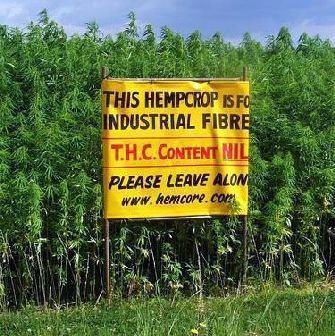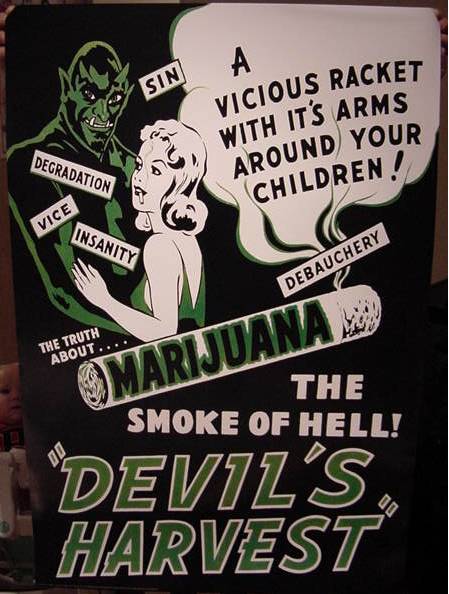Sunday, May 1, 2011
Industrial Hemp
Industrial hemp contains less than 1% of THC- the psychoactive component of marijuana. Trying to get high on industrial hemp is akin to trying to get drunk on non alcohol beer.
Hemp may well be the world's strongest and most durable natural plant fiber. It has been used to make cloth and rope for over 10,000 years. Hemp was the first crop ever cultivated for textile production.
Hemp cloth is stronger, longer lasting, more resistant to mildew, and cheaper to produce than cloth made of cotton. Hemp ropes are known for their strength and durability. The original Levi Strauss jeans were made from a hempen canvas. Even Old Glory was made from hemp fiber. A 44 gun frigate like “Old Ironsides” took over 60 tons of hemp for rigging, including an anchor cable 25 inches in circumference.
Hemp can be used to make virtually anything that is currently made of cotton, timber, or petroleum. George Washington and Thomas Jefferson both grew hemp. Ben Franklin owned a mill that made hemp paper. Thomas Jefferson drafted the Declaration of Independence on hemp paper. Until 1883, more than 75% of the world's paper was made with hemp fiber.
In 1937 Popular Science magazine called hemp "The New Billion Dollar Crop."
Then the big money people struck out to protect their interests. Newspaper publisher William Randolph Hearst led the crusade to ban hemp. Hearst owned millions of acres of prime timber land and a machine that simplified the process of making paper from hemp had just been invented. Hearst used his power as a publisher to create public panic about the evils of hemp and marijuana.
Another big money player Pierre DuPont held patent rights to the sulfuric acid wood pulp paper process. In 1937 DuPont patented nylon rope made from synthetic petrochemicals. Along with Dupont's backer Treasury Secretary Andrew Mellon the big money people prevailed and near the end of 1937 Congress passed the Marijuana Tax Act.
By placing a prohibitively high tax on hemp production it destroyed the industry. This was done to protect these big money interests of the timber, petrochemical, and cotton industries.
Hemp was briefly re-legalized during W.W.II. The U.S. government produced the movie Hemp for Victory to encourage farmers to grow hemp. Even 4H clubs were asked to grow hemp to help their country in wartime. The parachute that saved George H.W. Bush's life in World War II was made of hemp fiber.
Henry Ford dreamed that someday automobiles would be grown from the soil. In 1941 the Ford motor company produced an experimental automobile with a plastic body composed of 70% cellulose fibers from hemp. The car body could absorb blows 10 times as great as steel without denting. The car was designed to run on hemp fuel. Because of the ban on both hemp and alcohol the car was never mass produced.
Industrial hemp can replace cotton. Cotton is typically grown with large amounts of chemicals that are harmful to people, wildlife and the entire environment. Over 25% of all the world's pesticides are sprayed on cotton. Hemp grows well in a wide variety of climates and soils. It requires far less fertilizer and pesticides than most commercial crops.
All parts of the hemp plant are useful. Hemp can be used to produce everything from fuel to soap. The oil from hemp seeds has the highest percentage of essential fatty acids and the lowest percentage of saturated fats.
Industrial hemp can yield 3-8 dry tons of fiber per acre. This is four times what an average forest can yield. It can replace wood fiber and help save our forests. Trees take approximately 20 years to mature - hemp takes 4 months. Paper made from hemp lasts for centuries, compared to 25-80 years for paper made from wood pulp.
Hemp is the perfect source for fuel. It produces more biomass than any other plant. If we had to pay at the pump for all the military costs to keep the oil flowing clean burning alcohol fuel produced from hemp would be a bargain.
Today industrial hemp is cultivated in Canada, China, Russia, Hungary, Germany, the Netherlands, France, Spain, England, Poland and many other Eastern European countries.
We should all support the re-legalization of industrial hemp farming in the United States and the rest of the world.. a sustainable, renewable, natural, safe effective and reliable solution to many of civilizations ills.
Link to Original
Hemp: Lifeline to the Future
The Emperor Wears No Clothes
Labels:
Alternative Energy,
canvas,
clothing,
cover crop,
fuel,
Hemp,
paper,
renewable,
sustainable






